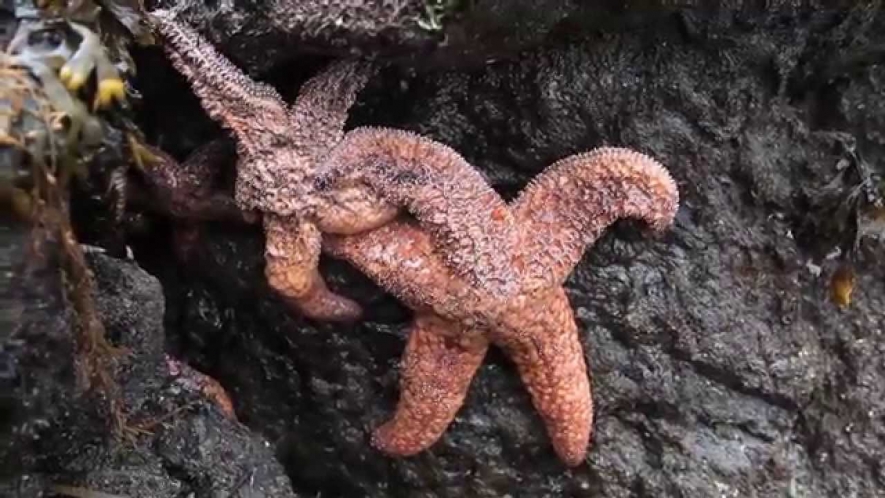Grisly sea star deaths are continuing to litter the tidelands with decaying, ghostly goo, but scientists now believe they, at least, may have identified the culprit.
New evidence suggests a mysterious wasting disease killing sea stars by the millions may be the result of a virus that has been found in starfish since at least the 1940s, according to new research published today in Proceedings of the National Academy of Sciences.
But it remains unclear if the pathogen's current deadly spread is part of a complex natural cycle, or whether blame for this massive die-off is linked in some way to climate change, souring seas or other harm humans have inflicted on the ocean.
Either way, the gruesome deaths are still spreading, confounding scientists and threatening to fundamentally transform marine systems along thousands of miles of Pacific Ocean coastline. And researchers still have no clue when the dying might end.
Sea star wasting produces white spots on starfish and causes their limbs to curl, writhe and contort. Their bodies then appear to deflate or dissolve, their arms dripping away or breaking off until the animals disintegrate into goopy white smears on the seafloor.
This isn'r the first time a so-called wasting disease has struck the West Coast, but the outbreak that surfaced first in Washington in 2013 is on a scale unlike anything ever recorded, said Prensa Latina News Agency report.
Previous mass die-offs of sea stars occurred during El Niño events in the early 1980s and late 1990s, leading scientists to presume there were links between ocean warming and the disease.
That's why researchers had hoped, as this summer slid into fall and ocean temperatures cooled, the disease that has hit some 20 species of sea star might actually slow or halt its spread.
In fact, divers enlisted to monitor sea stars report places once home to thousands of the creatures now are often home to just five or six. Where divers used to spot dozens of steering-wheel-sized 24-armed sunflower stars, they recently surveyed 17 sites and saw just two.
Scientists collected hundreds of sea stars and found most of the stars that contained the virus also were sick. And they determined that the virus potentially could be spread through water, without requiring direct contact between starfish.
Scientists have looked at pollution, marine discharges and shipping channels where invasive species may spread.
Some scientists also wonder if oxygen-depleted dead zones or ocean acidification changes in marine chemistry as oceans absorb excess carbon-dioxide emissions have somehow made sea stars more vulnerable.
While scientists continue to try and figure out how and why the disease is spreading, no one is exactly sure what to expect in the future.(KH)



















